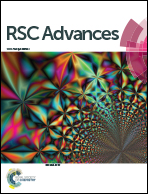Excellent mechanical properties of carbon fiber semi-aligned electrospun carbon nanofiber hybrid polymer composites
Abstract
The present investigation reports the excellent mechanical properties of carbon fiber fabric hybrid polymer composites obtained by integrating continuous semi-aligned carbon nanofiber layers in the interlaminar region between carbon fiber fabric plies. Different weight fractions (0 to 2.0 wt%) of continuous nanofiber layers were sandwiched with carbon fiber fabric preform to prepare polymer matrix hybrid nanocomposites by a compression molding technique. It was found that layers with 1.1 wt% content of semi-aligned nanofibers significantly enhance the bending strength by 175% and the modulus by 200%. The greater interfacial adhesion of the high surface area of the nanofibers significantly increases the interlaminar shear strength by 190%. The improvement in the mechanical properties of the polymer composites is due to the modification of the matrix properties, crack deflection and debonding. The high surface area and voids that form around the carbon nanofibers can absorb higher fracture energy. However, nanofiber content greater than 1.1 wt% at the interlaminar region of the composites has negative effects on the overall mechanical properties of the hybrid composites. The thick nanofiber layers are believed to be acting as micron size carbon fibers, which results in a downward trend in the bending properties. The present strategy for the preparation of high performance carbon fiber hybrid polymer composites utilizing electrospun continuous carbon nanofibers at the interlaminar region provides a promising approach for improving the properties of composites for different applications.


 Please wait while we load your content...
Please wait while we load your content...